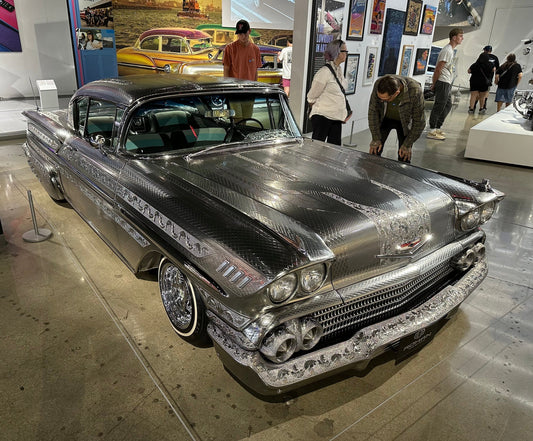In my continuing saga of how the Digital Lens came into being we've already covered Clue Number One: the shape and quality of the digital output stream.
And now we're on to timing. From Femto clocks to oven-controlled oscillators, the fad was catching on that clock and timing accuracy were somehow related to how digital audio was sounding, despite the fact that the actual clock in use when playing a CD comes not from the DAC's fancy stable clock, but from the who knows accuracy of the source, like the CD transport.
Hold that thought in your mind for a moment.
Remember in yesterday's post I referred to the Sony Discman? The problem of the laser losing track when you walked or ran got solved by building a digital storage unit inside the player. That storage unit was a temporary holding cell for the music that delayed its output by a few seconds (if you hit pause or stop it could keep playing for a few seconds). If the laser lost its place on the CD, the input to the storage (memory) unit just waited until the laser got back online and then worked again. If the storage unit was big enough, it could buffer those starts and stops enough to output a steady music stream.
Hold that in your memory too.
During this mid 90s era, one of the innovations that sparked my interest was from the Mark Levinson company. Levinson designers had added an interesting feature they were touting—an input buffer that was said to improve the impacts of the transport's clock. This circuit, a FIFO (First in First Out) is similar to what we used to refer to as a Bucket Brigade (picture an old time firefighter group in the 1800s—a line of 16 firefighters handing bucket after bucket of water down the line from the source until the first bucket finally makes it to the fire itself). Bit 1 enters the brigade (the actual device is called a Shift Register), and gets recorded. On the next clock cycle, bit 2 gets entered, and so forth until all 16 bits are stored and then finally released, one bit at a time (in the same order and pace it came in).
Sound familiar? Sure, it's the same sort of memory storage technique Sony used for their Discman.
This delayed arrangement has an independent clock that shifts the data in and eventually out. Because the shift clock is not the source clock (from the CD transport), one doesn't affect the other as much.
Was this the perfect solution? Well, no, because Levinson took a shortcut that created a fatal flaw. They used for their separate shift clock a PLL. (Sorry to those of you I have long ago lost in this discussion. I am really trying to keep it simple).
Without going nuts on all this tech talk, let's just say that a PLL (Phase Locked Loop) is a special kind of clock that varies its timing according to the changing circumstances of the device it is controlling.
So, Clue 2 had to do with timing, and shift registers, and PLLs.
And onward tomorrow.










